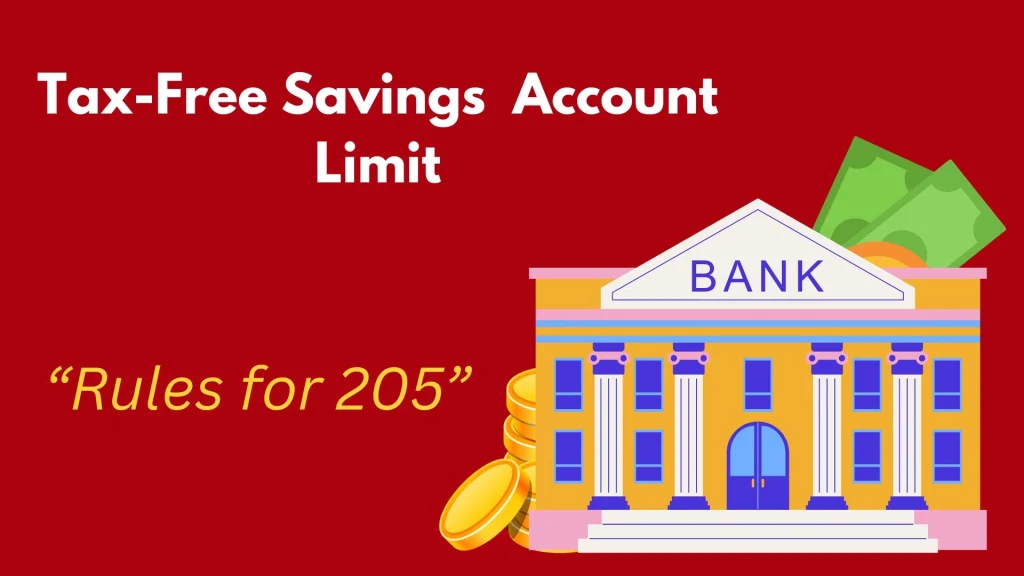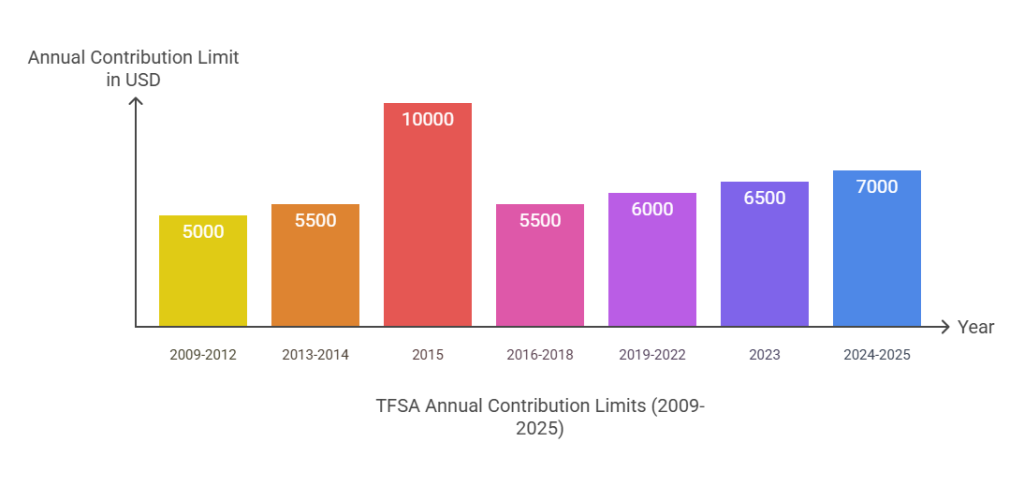TFSA Contribution Limit and Tax-Free Savings Rules for 2025
The Tax-Free Savings Account (TFSA) is a popular Canadian savings and investment tool. It offers tax-free growth and withdrawals. For 2025, the TFSA contribution limit remains at $7,000, the same as in 2024. This brings the total cumulative contribution room to $102,000 for individuals who have been eligible since the program began in 2009. The TFSA Contribution calculator is also available to calculate the TFSA contribution limit.

TFSA Contribution Limit Overview
The contribution limit has varied over the years, starting at $5,000 in 2009 and peaking at $10,000 in 2015 before being adjusted back to inflation-indexed amounts.
The TFSA contribution limit is the maximum amount you can contribute to your Tax-Free Savings Account each year, determined by the Canadian government. For 2025, the annual limit is $7,000, with unused contribution room from previous years carried forward.
What is the Maximum TFSA Contribution for 2025?
The annual TFSA limit for 2025 is $7,000, with a cumulative contribution room of $102,000 for those eligible since 2009. Withdrawals are added back to contribution room the following year. Following are Details on TFSA Contribution Rules
1. TFSA Limit (Annual Contribution Limit)
For 2025, the annual TFSA contribution limit is $7,000, the same as in 2024. This limit is indexed to inflation and rounded to the nearest $500.
The contribution limit has varied over the years, starting at $5,000 in 2009 and peaking at $10,000 in 2015 before being adjusted back to inflation-indexed amounts.
2. Cumulative Contribution Room
As of January 1, 2025, the total cumulative contribution room for someone who was 18 or older in 2009 and has never contributed to a TFSA is $102,000.
If you turned 18 after 2009, your contribution room starts accumulating from the year you turned 18.
3. Unused Contribution Room
Any unused TFSA contribution room adds up each year, so you can use it later. Withdrawals also add back to your room next year.
If you withdraw money, the amount is added back to your contribution room at the start of the next year. This makes TFSAs flexible and easy to manage for long-term savings.
4. Withdrawals and Re-contributions
Withdrawals from a TFSA are added to your contribution room in the following calendar year. However, re-contributing the same amount within the same year could result in over-contribution penalties unless you have an unused room available
These rules provide flexibility but require careful tracking of contributions and withdrawals to avoid penalties and maximize benefits.
TFSA Historical Contribution Limits
The annual limit is indexed to inflation and rounded to the nearest $500. This means that as the cost of living rises, so does your contribution room.
Here’s a TFSA contribution limit chart :
Year | Annual Limit |
|---|---|
2009-2012 | $5,000 |
2013-2014 | $5,500 |
2015 | $10,000 |
2016-2018 | $5,500 |
2019-2022 | $6,000 |
2023 | $6,500 |
2024-2025 | $7,000 |
The one-time increase to $10,000 in 2015 was an exception and was later reversed

How Does Contribution Room Work?
Your TFSA contribution room consists of:
- The current year’s annual limit.
- Any unused contribution room from previous years.
- Withdrawals made in previous years (added back in the following year).
- If you contributed only $3,000 in 2024 (leaving $4,000 unused), that unused amount carries forward to 2025.
- If you withdrew $2,000 from your TFSA in 2024, that amount is added back to your contribution room for 2025.
How to Check Your Contribution Room
You can find your exact contribution room by logging into your CRA My Account or calling their Tax Information Phone Service. However, note that recent contributions or withdrawals do not immediately appear in the records.
Over-Contribution penalties
Over-contributing to your TFSA can result in penalties. The Canada Revenue Agency (CRA) charges a 1% tax per month on the excess amount until it’s withdrawn or corrected.
Example:
Let’s say your available contribution room is $7,000 for 2025. If you accidentally contribute $10,000:
- The excess amount is $3,000.
- You’ll pay a penalty of $30 per month until the over-contribution is resolved.
- Keep track of all contributions across multiple TFSAs.
- Double-check your available room before making contributions.
Withdrawals and Re-Contributions
One of the most flexible features of a TFSA is that withdrawals don’t permanently reduce your contribution room. Instead:
Any amount you withdraw is added back to your available room starting January 1 of the following year.
However, re-contributing withdrawn amounts within the same calendar year could lead to over-contribution penalties unless you have sufficient unused room.
How to Maximize Your TFSA Contributions
It is necessary to maximize your contributions toward TFSA to avoid penalties. Here are some helpful tips to prevent overpayments and penalties.
- Start Early: Even small contributions can grow significantly over time thanks to compound interest.
- Use Dollar-Cost Averaging: Contribute smaller amounts regularly instead of lump sums to reduce market risk.
- Invest Wisely: TFSAs can hold various investments like stocks, bonds, ETFs, mutual funds, and GICs. Choose options aligned with your goals.
- Track Your Room: Keep detailed records of contributions and withdrawals to avoid penalties.
- Make Withdrawals Strategically: Plan withdrawals late in the year so you regain that room sooner (in January of the next year).
Conclusion
The Tax-Free Savings Account (TFSA) is a great way for Canadians to save and invest without paying taxes. Knowing the rules, especially the contribution limits, helps you avoid mistakes and get the most out of it. If you’re new to TFSAs or have unused contribution room, now is a great time to begin.
Stay updated on annual limits and track your contributions carefully. Use tools like CRA My Account or ask a financial advisor for help. This will ensure you make the most of this amazing savings option!
